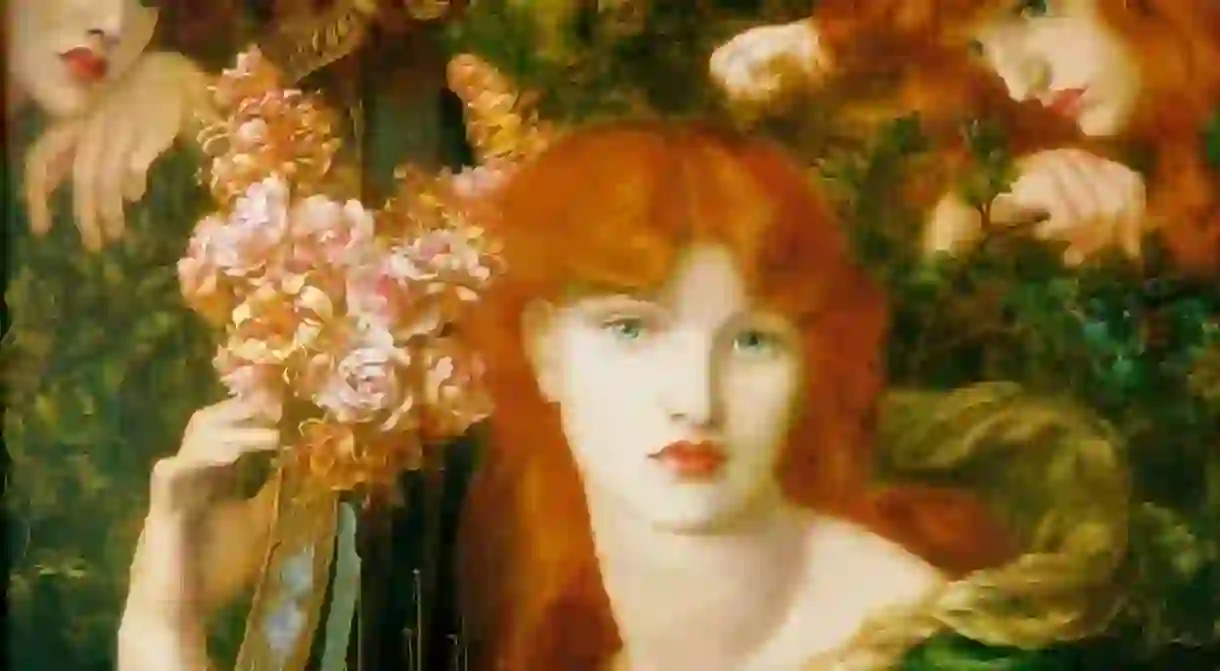A Pre-Raphaelite Tour of London

The original rebels of British art revelled in the wonders of nature as opposed to the ideals of the Renaissance that were lauded by the Royal Academy. Their images of flame-haired women and tableaus of literary tales gained them worldwide acclaim both at home and abroad. Here are some of the best places in London to experience the works of the Pre-Raphaelite Brotherhood, from paintings and prints to stained glass.
The Pre-Raphaelite works to see at Tate Britain
Art Gallery, Building, Museum

As one might expect from a museum dedicated to British art, Tate Britain has some of the greatest works from the Pre-Raphaelite movement in its collection. It holds one of the most recognisable works of art in the world, Sir John Everett Millais’s Ophelia (1851-1852), which depicts the doomed Shakespearian heroine in a lake filled with flowers. The stunning portrait known as Monna Vanna (Vain Woman, 1866) by Dante Gabriel Rossetti depicts a gloriously poised woman in luxurious clothing, complete with ostentatious hair clips and a feather fan. The artist considered it one of his best works.

The Pre-Raphaelite Café at the V&A
Museum

When the V&A hired William Morris to decorate one of the new rooms for the first-ever museum café, he had yet to find fame as one of the country’s greatest artists and designers. However, his signature Arts and Crafts style nonetheless permeates this beautiful gilded room, which he decorated with the help of his friends Philip Webb and Sir Edward Burne-Jones. The museum’s collection also houses countless examples of William Morris’s textile designs and printing blocks, and a considerable number of photographs recording the lives of members of the brotherhood.
The Pre-Raphaelite highlights at Guildhall Art Gallery
Art Gallery, Museum

Guildhall Art Gallery is nestled within London’s Square Mile, moments from the Barbican and the bustle of the financial district. Among its important collection of Victorian art are Sir John Everett Millais’s The Woodman’s Daughter (1851) and Dante Gabriel Rossetti’s La Ghirlandata(The Garland Women, 1873), both of which were bequeathed to the gallery in 1902 by Charles Gassiot, a City wine merchant. Other highlights include Sir Edward Poynter’s epic Israel in Egypt(1867).

Step inside a Pre-Raphaelite home at Leighton House
Building, Museum, Park

Although Lord Frederic Leighton was a self-described enemy of the Pre-Raphaelites, he had to admit that they shared an affinity with nature, poetic idealism and a distaste for traditional narrative, not to mention a tendency to paint beautiful women. Leighton’s incredible studio-home was the first of its kind when it was built and features an astonishing array of glazed tile work, vaulted ceilings and a collection of the artist’s work, including one of the last pieces he ever painted, titled Clytie(1890-1892).
Pre-Raphaelite design at William Morris Gallery
Art Gallery, Museum

The former childhood home of the Arts and Crafts pioneer is an award-winning gallery nowadays, featuring furniture, prints, textile designs, tapestries, photographs and ephemera relating to his career as not only an artist and designer but also as a Socialist campaigner. The gallery explores his printing techniques, deft craftsmanship and manifestos relating to workers’ rights. There are also plenty of examples of work by his peers, including designs for stained-glass windows by Sir Edward Burne-Jones.














